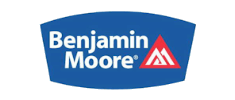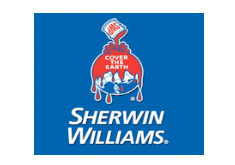Varnish Finishing
Superior Finish
One of the most superior, resistant and durable finishes is varnish. Without question, it enhances and gives warmth to the grain of the wood, its resistant to impact, heat, abrasion, water and alcohol. It can also be used as a topcoat over worn finishes. Varnish provides a clear finish while slightly darkening the wood. Its available in high-gloss, semi-gloss, satin and matte or flat surface finishes. There are a number of types to choose from, but most important we need to choose one that will work well with your furniture wood.
Types of Varnish
With many types of varnish on the market, choosing the right one for the purpose at hand can be rather tricky and even daunting task. Traditional varnish based on natural resins and oils and is typically thinned with mineral and spirits or turpentine. Spar varnish is a natural varnish formulated to stay tacky; it should never be used for furniture. Synthetic varnishes based on synthetic resins are required special thinners.
Polyurethane is a type of synthetic varnish. It is a clear, non-yellowing, and very strong finish. Other synthetic varnishes are the phenolics, used for exterior and some marine work, and the alkyds, often used in colored preparations. Unfortunately, Phenolic and alkyd varnished yellow with age and are not usually recommended for refinishing. With any tope of varnish, look for quick drying to minimize dust problems. Use spray varnish only where brushing is impractical, such as on rattan or wicker.
Some water-base varnishes offer similar results without the cleanup hassle and toxins. Most will dry clear to the touch in about twenty to thirty minutes. They don’t crack, bubble, or chip and they are water-and-alcohol-resistant. Most importantly, these varnishes do not yellow. However, when applied in several coats, the finish might being to cloud, depending on the wood.
Special Requirements
Natural vanish can be used in conjunction with any stain or filler. The sealer for natural varnish is a thinned shellac or a mixture of one part varnish and one part turpentine or mineral spirits. Do not mix brands or types of varnish, under any circumstances. Polyurethane varnish is not compatible with all stains and fillers. Be sure to read the labels, prior to purchasing compatible materials. Some polyurethanes can be thinned for use as a sealer, with others do not require sealers. Some sanding sealers are compatible with polyurethanes.
Water-based varnish can be used over stain and filler, provided you allow sufficient time for the undercoats to fully cure. The process can take up to a month or more. You can also apply a sealer coat of shellac between the two if you don’t want to wait.
Understand that varnish generally dries very slowly and in some instances can be difficult to apply, so its essential that you understand how to use this finish.
Application Techniques
We apply a varnish finish only with a new and clean, natural-bristle brush. Also, we us only new varnish as varnish that has been used a number of times, may contain lumps of hardened varnish from the rim or sides of the container. These hardened portions can really cause a lot of trouble. We also plan the job accordingly, so we don’t have enough varnish left to be wasteful. Leftover varnish can be used on parts that show or projects where the finish isn’t critical.
We must properly prepare bare wood for applying a varnish vanish. Finished wood needs to be top-coated and must be cleaned and slightly sanded. Immediately before applying the varnish, clean each surface thoroughly with a tack cloth.
Before we start work we turn the piece of furniture so that it’s major surfaces are horizontal. If the piece has doors, shelving, drawers or other removable parts, we remove them and finish them horizontally. We work on only one surface at a time, and work on large surfaces last.
We apply varnish to the prepared wood with, smooth and even strokes, laying the finish along the grain in strips, the width of the brush. Do not touch the brush to the rim of the varnish container, shake or tap off excess varnish, inside the container or on a strike can. The varnish should flow onto the surface of the wood with no drag. If the brush starts to pull or if we notice small missed or thin spots, we add about one ounce of thinner to the varnish.
We use turpentine or mineral spirits for natural varnish. For polyurethane varnish, we use the thinner recommended by the manufacturer. We stir the thinner gently into the varnish, being careful not to raise any bubbles.
Once we’ve layered on an even coat of varnish in strips along the grain of the week, we apply more varnish in even stores across the grain of the wood to level and even out the surface. The varnish should be as even and level as possible, with no thick or thin spots, but a thin coast is much better than a thick one.
Thicker coats of varnish take much longer to dry and the tend to crack as the varnish ages. As we work, we remove any dust and lint from the wet finish with a rosin link picker.
We complete each surface by tipping the wet varnish in the direction of the grain, but using an almost dry brush for this step. Holding the brush at a slight angle to the surface very lightly stroke the surface of the varnish to remove brush marks and even out the surface. We smooth out the entire varnished surface, working in strips of the wood. As you work, we pick off the dust with a lint picker. Any remaining brush marks will disappears as the varnish beings to dry.
We apply varnish very carefully to prevent any thick spots. At outside corners, we work from the flat surface toward the corner, lift the brush as it nears the corner and before it flips down over the edge. This prevents a buildup of varnish along the edge. At the inside corners, we work an inch or two away from the corner, then we brush the varnish into the corner, tip it off, and leave it along. This method prevents buildup n many flat-surface brushings.
While applying a varnish finish, we brush lengthwise along rungs, turnings and spindles. On carved moldings, we apply the finish to the carvings first with a fairly dry brush; then finish the flat surface with the tip of the brush. Finally we use a very dry brush to go over the carvings and then the flats, leveling the finish along the way and removing fat edges, sags or runs. On raised panel doors, we finish the panels first and then move on the flat framing. Varnish finish will build up at the miters in the frame where they meet the panel, we remove the excess with a very dry brush, working from the corner out.
Drying and Recoating
Varnish drying times will vary depending on type of varnish. For instance, natural varnish drying times in the twenty to twenty-four hour range. Water-based polyurethanes often dry more quickly. Dampness slows drying, so its recommended that you extend all drying times if you’re applying varnish in humid or wet weather. Also, drying times are not curing times, and new varnish is easily damaged. Be sure to allow at least twenty four hours or as long as the manufacturer recommends, if possible, let it dry a couple of days or more.
We typically apply two or even three coats for a nice smooth finish and follow the manufactures recommendations. Between coats of varnish, we allow sufficient time for the first coat of varnish to harden and dry, as per manufacturer specifications.
Some varnishes on the market should be applied fifteen to twenty hours from the first coat was applied, but in general we will wait about twenty hour hours or longer, if required. When the first coat is dry, we will lightly sand the varnished wood in the direction of the grain, using sandpaper on a padded sanding block to abrade the surface evenly, but not cut it deeply.
One completed, we clean away all sanding residue with a tack cloth, and apply the second coat of varnish the same way as you did the first. We will repeat this procedure, sanding the varnished wood carefully, if a third coat of varnish is required.
Commercial Painting
Edmonton Painters Pro is pleased to provide expcetional commercial painting services for all ov ouer customers. Our Edmonton Painting Team is highly skilled, efficient, and focuses on performing high quality, painting work. Whether we are painting your house, office or mufti-family property, our painting services are top quality. Don’t hesitate to reach out to us for your free quotation and we will be pleased to assist you.
Back to Home Page
Click below to return to our home page.
Contacting Edmonton Painters Pro
Contacting Edmonton Painters Pro, couldn’t be easier. We have a number of easy and convenient contact options available, so if you have any questions, don’t hesitate to reach out to us for immediate assistance and we will be pleased to help.
Service Locations
Edmonton, Crestwood, Riverdale, Garneau, Ritchie, Highlands, Westmount, Oliver, Glenora, Strathcona,
![]()
painters, residential, commercial, wallpaper, nock down, textured ceilings, varnish finishing, water damage,
stain removal, mold removal, paint restoration, drywall service, feature walls, taping and mudding, plaster repairs









